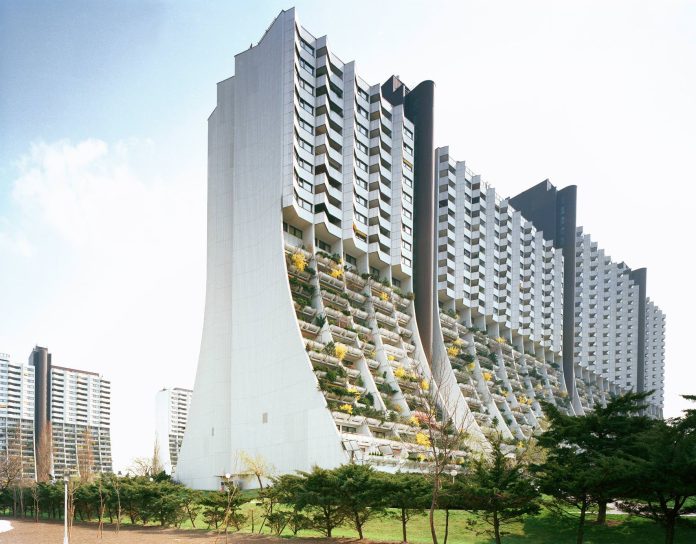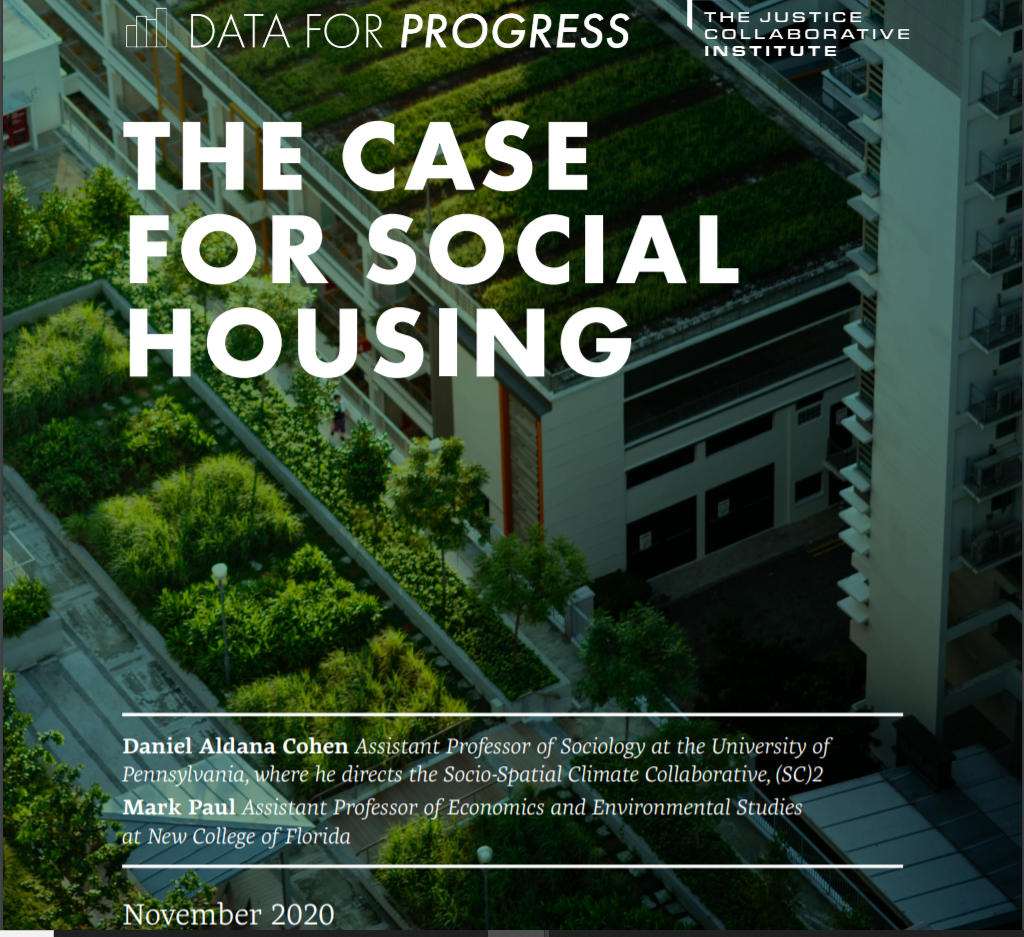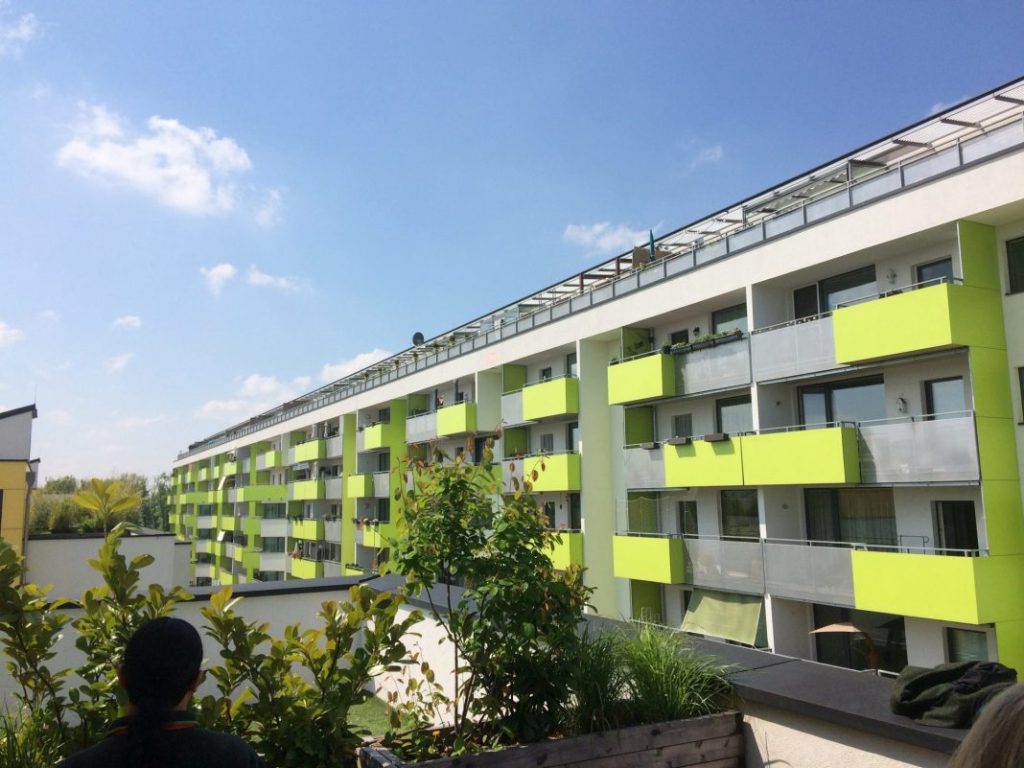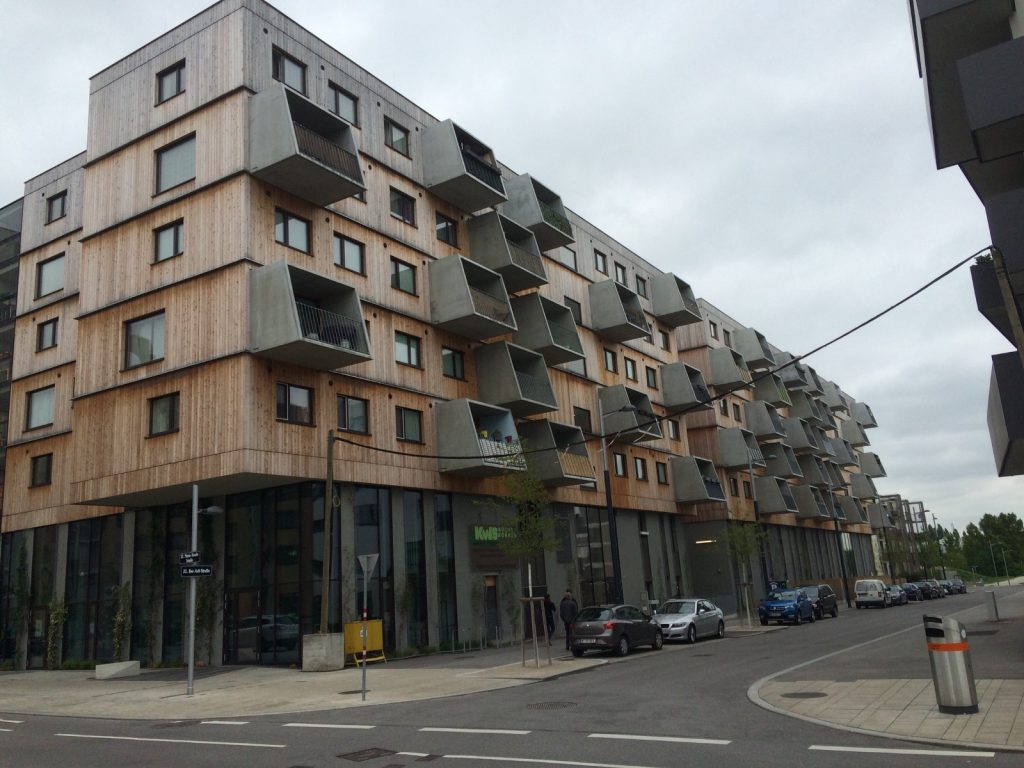
Since the Reagan administration, the federal government has gotten out of the game of producing social housing itself. A new report titled “The Case for Social Housing” calls for the federal government to reverse that in a big way and produce twelve million social housing units by 2030, echoing a proposal from Rep. Ilhan Omar (D-Minneapolis).
While it sounds colossally ambitious, report authors Daniel Aldana Cohen and Mark Paul argue the time is ripe and the public squarely behind social housing production.
“A recent poll conducted by the Justice Collaborative Institute and the left-leaning policy shop Data for Progress finds that 63% of likely voters support federal investment in social housing,” Kriston Capps reported in CityLab. “Some 56% of Republicans said they would support social housing (along with nearly 80% of Democrats).”
The Covid pandemic stalled out the economy, but social housing could offer an ideal way to jumpstart it.
“There has never been a better time to invest in a substantial buildout of social housing,” Justice Collaborative Institute and Data for Progress argued in the report. “The economy is in the midst of the worst recession since the Great Depression, with nearly 30 million people collecting, or waiting for, unemployment benefits. Industrial capacity is running 30% below potential, meaning plenty of factories could be kicked into gear to churn out building essentials.”

Cohen and Paul estimate that constructing 12 million homes would generate one million jobs and may cost as little as one trillion dollars–although that may be overly optimistic about federal cost per unit at approximately $83,333. They may be able to braid investment with state, local, and nonprofit dollars, but the scale of uptick in production may strain those systems initially. For example, Washington’s share of these 12 million homes would be about 275,000 based on population–though other metrics like housing demand might tilt even more housing investment to the Evergreen State.
President-Elect Joe Biden campaigned on increasing social housing–though not to the same degree. “Even the Biden campaign has embraced the need for a mass build-out of new housing outside the market; he has pledged to build 1.5 million affordable, green units,” the report said. “Biden’s campaign has also pledged to expand the federal voucher program, known as Section 8, that provides direct rental assistance.”
Some progressive leaders have already proposed going farther. Rep. Omar introduced a bill aiming to generate 12 million social housing units, as we noted in our coverage of Cancel Rent efforts. Similarly, Senator Bernie Sanders’ (D-Vermont) presidential platform called for $2.5 trillion in investment to create 10 million homes.
The plans seek to meet the massive scale of the problem, which has festered for decades but is being brought to a head by the pandemic that has caused a rent crisis. An end to the national and local eviction moratoriums will likely unleash a wave of displacement across the country, which has sparked the Cancel Rent movement to respond to this crisis.
“As of 2018, 43 million households rent; nearly half of them (21 million) are rent-burdened, with rent claiming more than 30% of their income,” Cohen and Paul write. “More than 10 million households had to shell out at least half their income to make rent—and that was before the COVID-19 crisis. There is no county in the United States where a full-time worker earning the minimum wage can afford a two-bedroom apartment.”
Social housing history
The largest American housing programs have been geared toward suburban home ownership, particularly subsidizing home mortgages of the rich and middle class. This in turn has required subsidizing an extensive network of costly freeways to serve all this White Flight suburban sprawl.
The United States’ current federal housing policy is designed to work for only about half of the nation: homeowners. Every year, the government spends hundreds of billions of dollars subsidizing housing, but right now, about five times more public money flows every year to support homeownership—mostly for the affluent—than to affordable rental housing.1 This is no accident. Back in 1937, the real estate industry successfully repelled the efforts of the Labor Housing Conference and the New Deal’s Public Works Administration to create social housing in the United States that would look much like the successful model still used today in Vienna—mixed-use, mixed-income, and high quality. This, after all, was the real estate industry’s nightmare: A viable public housing option that could undermine the private sector’s ability to rake in massive profits.
The Case for Social Housing
Redlining further cemented segregation and blocked Blacks from accumulating household wealth at similar rates. By the 1980s, President Ronald Reagan set to work dismantling the nation’s public housing, barring further investment in new public housing and switching to the public-private partnership model.
“That racist system has helped build the white modern American middle class while ensuring the other Americans were kept out by the white picket fences,” Cohen and Paul write. “For most Americans, the equity they have in their home represents the majority of their wealth.”
Vienna’s example
Time and again the report cites the shining example of Vienna: “Meanwhile, the capital of social housing, Vienna, continues to relentlessly limit rents and build the highest quality social housing. Nearly two-thirds of the city’s residents live in rent-controlled flats; overall, tenants pay less than half as much as Londoners, and nearly a third as much as Parisians per square foot.”
Sounding an awful lot like Mike Eliason–passivhaus architect and columnist at The Urbanist–authors stress the high quality of social housing in Vienna, which is in turn tied to the Austrian capital’s remarkably high standard of living. See Eliason’s two-part series recounting housing lessons from Vienna.
“In all these cases, the beauty of the architecture is more than a mere flourish: it’s about the valorization of every human being, the refusal to stigmatize public goods, and putting aesthetic talent to shared, public use,” the report states. “Done right, social housing works brilliantly. Vienna has been ranked the world’s most livable city 10 years in a row. Why should the United States not join the cutting edge of global architecture in repairing and developing green social housing?”
The link to adapting to and mitigating climate change is clear for the authors–and another area where Vienna excels. Increasing the energy efficiency of our housing stock, especially as it comes to heating and cooling, could greatly reduce our carbon footprint, save on costs, and make housing more resilient to the effect of climate changes. Passive house buildings aren’t just cheaper to cool, their air filtration systems also can filter out forest fire smoke and other forms of air pollution.
“[H]ome energy use contributes nearly one-sixth of the country’s heat-trapping greenhouse gas emissions,” the authors note. “Those emissions are causing sea-level rise that could permanently flood the land on which 13 million people currently live by the end of the century.” The United States desperately needs to set a new standard of housing—by building beautiful, healthy, carbon-neutral social housing that echoes the best models worldwide, and raises the bar for all Americans.
Congress does not have a strong track record of passing such visionary policy recently. It’s hard to imagine Senate Republicans going along with such a plan, but perhaps Democrats will be able to claw back control of the Senate or flip enough votes. With the housing crisis only likely to get worse, pressure on Congress to act is likely to rise.
Doug Trumm is publisher of The Urbanist. An Urbanist writer since 2015, he dreams of pedestrian streets, bus lanes, and a mass-timber building spree to end our housing crisis. He graduated from the Evans School of Public Policy and Governance at the University of Washington in 2019. He lives in Seattle's Fremont neighborhood and loves to explore the city by foot and by bike.




